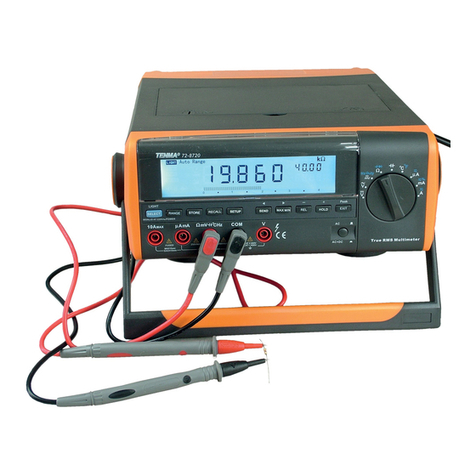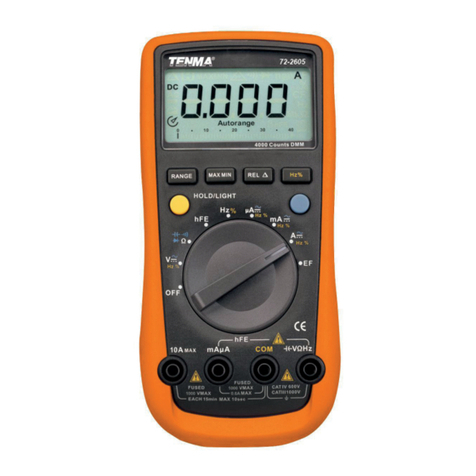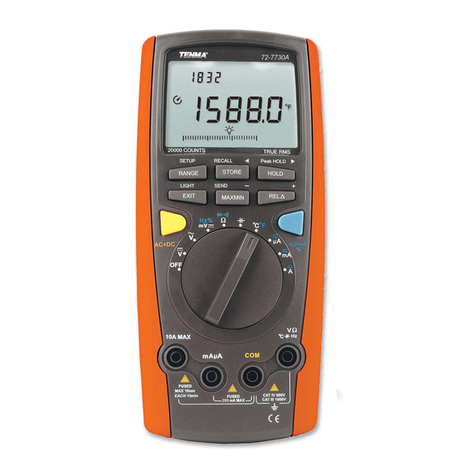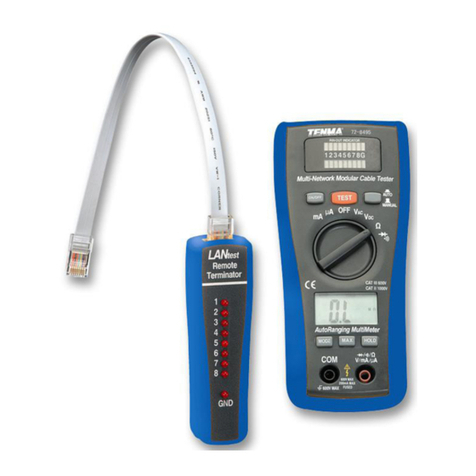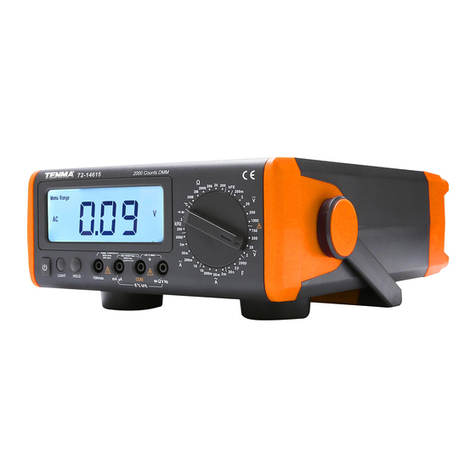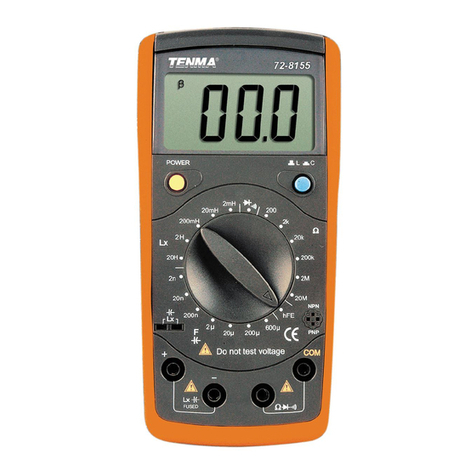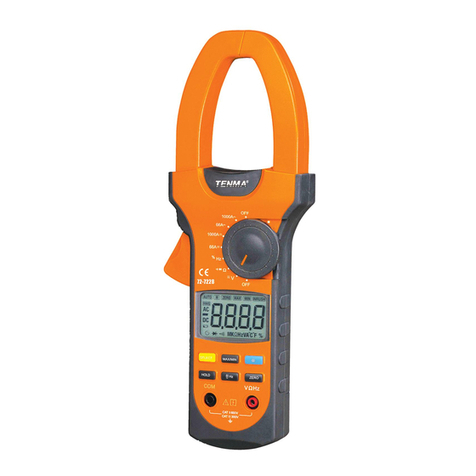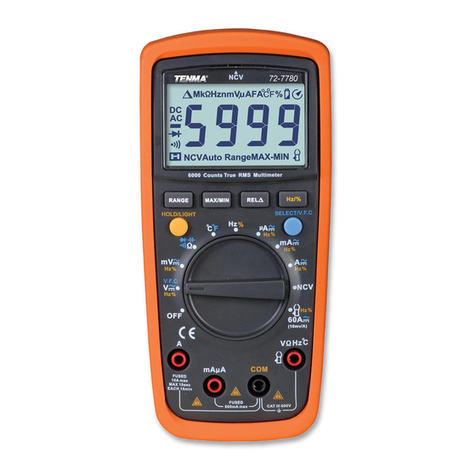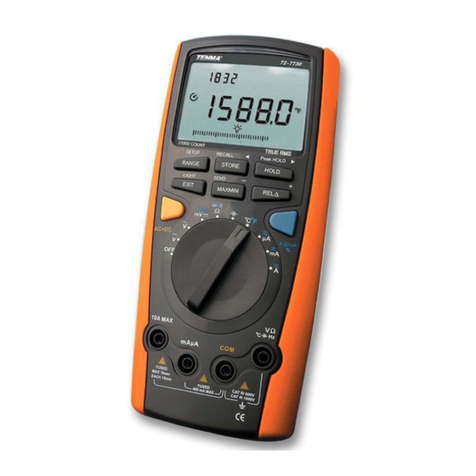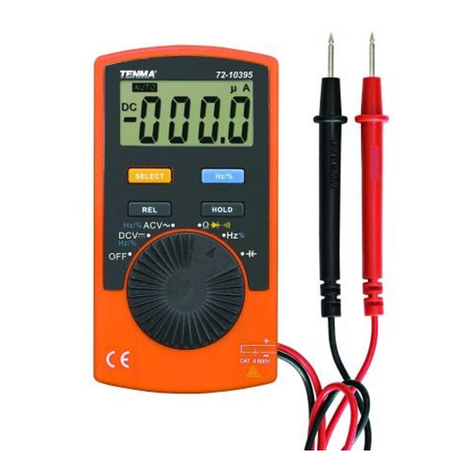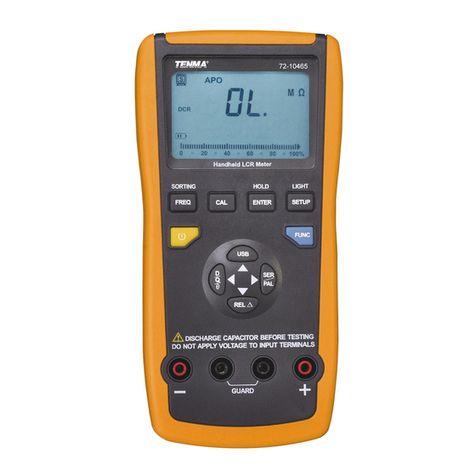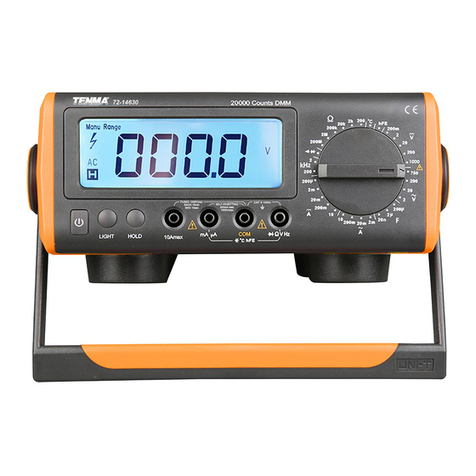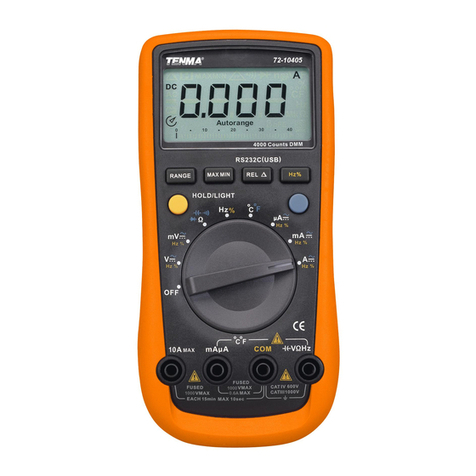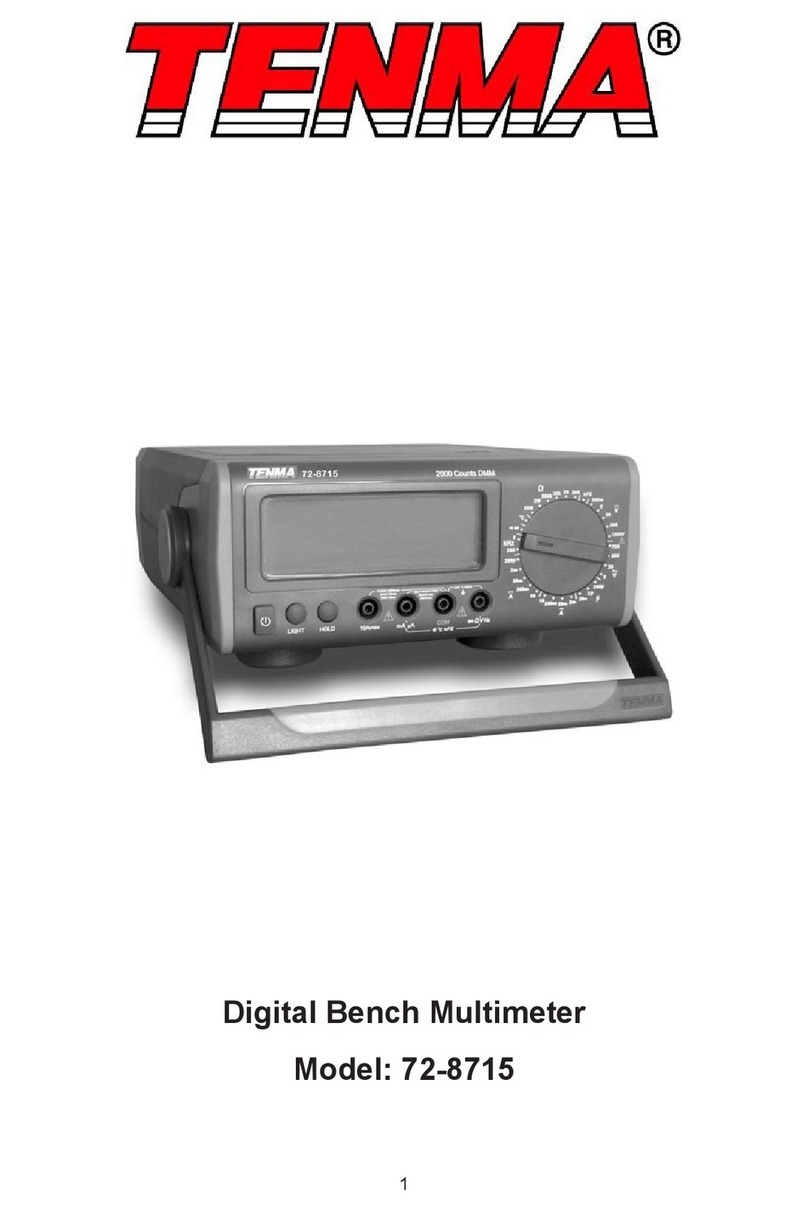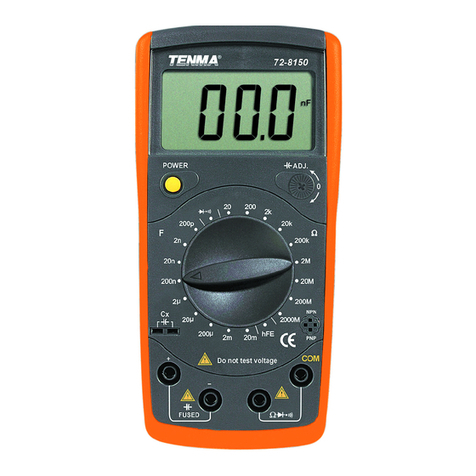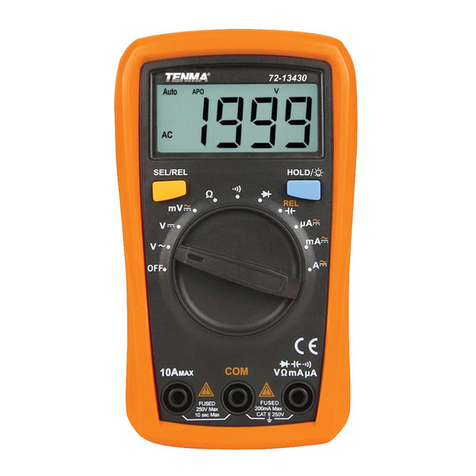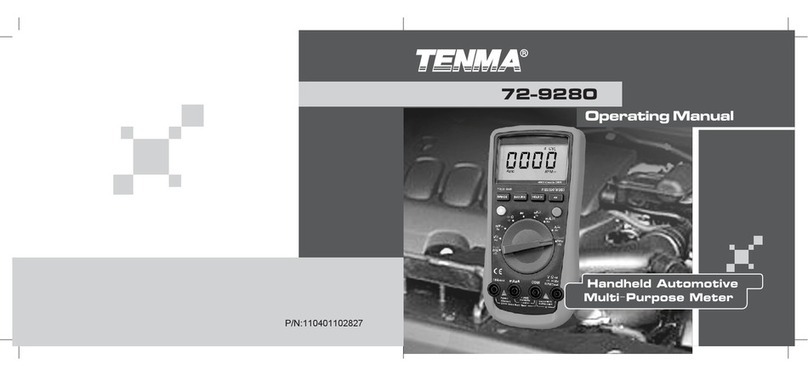Rules For Safe Operation
To avoid possible electric shock or personal injury, and to
avoid possible damage to the Meter or to the equipment
under test, adhere to the following rules:
lBefore using the Meter inspect the case. Do not use the
Meter if it is damaged or the case (or part of the case) is
removed. Look for cracks or missing plastic. Pay
attention to the insulation around the connectors.
lInspect the test leads for damaged insulation or exposed
metal. Check the test leads for continuity. Replace
damaged test leads with identical model number or
electrical specifications before using the Meter.
lDo not apply more than the rated voltage, as marked on
the Meter, between the terminals or between any
terminal and ground.
lThe rotary switch should be placed in the correct
position and no change of range made during
measurement , to prevent damage of the Meter.
lWhen working at an effective voltage over 60V
DC or 30V rms AC, special care should be taken
there is danger of electric shock.
lUse the proper terminals, function, and range for your
measurements.
lDo not use or store the Meter in an environment of high
temperature, humidity, explosive, flammable and
strong magnetic field. The performance of the Meter
may deteriorate after dampened.
lWhen using the test leads, keep your fingers behind the
finger guards.
lDisconnect circuit power and discharge all high-voltage
capacitors before testing resistance, continuity, diodes,
current, or capacitance.
lBefore measuring current, check the Meter’s fuses and
turn off power to the circuit before connecting the Meter
to the circuit.
lReplace the battery as soon as the battery indicator " "
appears. With a low battery, the Meter might produce
false readings that can lead to electric shock and
personal injury.
lRemove test lead, temperature probe, RS232C interface
Warning
5
Model 72-7740/72-7745: OPERATING MANUAL

